
Rabat: The Jewel of Morocco's Atlantic Coast
Discover Rabat, Morocco's capital city where historical landmarks, vibrant arts, and serene coastal beauty come together to create an unforgettable travel experience.
Rabat, Morocco's capital, is a captivating blend of historical charm and modern allure. Nestled along the Atlantic Coast, this city offers a serene escape with its picturesque boulevards, lush green spaces, and a rich tapestry of history and culture. Begin your journey at the ancient Kasbah of the Udayas, a breathtaking fortress with stunning views of the ocean. Wander through its narrow streets lined with white and blue houses, and relax in the Andalusian Gardens. The Hassan Tower, an iconic minaret, stands as a testament to Rabat's historical significance. Nearby, the Mausoleum of Mohammed V is a masterpiece of traditional Moroccan architecture, where you can pay your respects to past kings. Rabat's modern side is equally enticing. The city boasts a vibrant arts scene, highlighted by the Mohammed VI Museum of Modern and Contemporary Art. Stroll along the tree-lined avenues of the Ville Nouvelle, and enjoy a coffee at a chic café. The Medina, though smaller than those in other Moroccan cities, offers a more relaxed shopping experience, where you can buy traditional crafts and textiles. Nature lovers will find solace in Rabat's many gardens and parks. The exotic Jardin d'Essais Botaniques is perfect for a leisurely afternoon, while the coastal Bouregreg Marina offers a scenic backdrop for evening walks. With a mild climate year-round, Rabat is an ideal destination for those seeking a mix of culture, history, and relaxation.
Local tips in Rabat
- Visit the Kasbah of the Udayas early in the morning to avoid the crowds and enjoy the best light for photography.
- Wear comfortable shoes as you'll be doing a lot of walking, especially in the Medina and historical sites.
- Try the local seafood at one of the coastal restaurants for a taste of Rabat's fresh and flavorful cuisine.
- Use the tram system for easy and affordable transportation around the city.
- Check the schedule for cultural events at the Mohammed VI Museum of Modern and Contemporary Art for a chance to experience Rabat's vibrant arts scene.
Neighbourhoods in Rabat
Rabat: The Jewel of Morocco's Atlantic Coast
Rabat, Morocco's capital, is a captivating blend of historical charm and modern allure. Nestled along the Atlantic Coast, this city offers a serene escape with its picturesque boulevards, lush green spaces, and a rich tapestry of history and culture. Begin your journey at the ancient Kasbah of the Udayas, a breathtaking fortress with stunning views of the ocean. Wander through its narrow streets lined with white and blue houses, and relax in the Andalusian Gardens. The Hassan Tower, an iconic minaret, stands as a testament to Rabat's historical significance. Nearby, the Mausoleum of Mohammed V is a masterpiece of traditional Moroccan architecture, where you can pay your respects to past kings. Rabat's modern side is equally enticing. The city boasts a vibrant arts scene, highlighted by the Mohammed VI Museum of Modern and Contemporary Art. Stroll along the tree-lined avenues of the Ville Nouvelle, and enjoy a coffee at a chic café. The Medina, though smaller than those in other Moroccan cities, offers a more relaxed shopping experience, where you can buy traditional crafts and textiles. Nature lovers will find solace in Rabat's many gardens and parks. The exotic Jardin d'Essais Botaniques is perfect for a leisurely afternoon, while the coastal Bouregreg Marina offers a scenic backdrop for evening walks. With a mild climate year-round, Rabat is an ideal destination for those seeking a mix of culture, history, and relaxation.
When is the best time to go to Rabat?
Iconic landmarks you can’t miss
Hassan Tower
Discover the iconic Hassan Tower in Rabat, a historical landmark representing Morocco's rich architectural heritage and cultural significance.

Rabat Old Market
Experience the vibrant culture and rich traditions of Morocco at Rabat Old Market, a bustling hub of local crafts and delectable treats.

Le Dhow
Experience the perfect blend of Moroccan cuisine and nightlife aboard Le Dhow, a unique restaurant and lounge on the Bouregreg River in Rabat.

Mausoleum of Mohammed V
Discover the Mausoleum of Mohammed V in Rabat: A stunning architectural jewel reflecting Morocco's rich history and royal heritage.

Nouzhat Hassan Garden
Experience the serene beauty of Nouzhat Hassan Garden, a lush oasis in Rabat perfect for relaxation and cultural immersion.

Chellah
Discover the enchanting beauty of Chellah, a historical landmark in Rabat, where ancient history meets serene gardens.

Les Jardins Exotiques de Bouknadel
Discover the tranquility and exotic beauty of Les Jardins Exotiques de Bouknadel, a botanical paradise near Salé, Morocco.

Rabat Grand Mosque
Explore the stunning Rabat Grand Mosque, a remarkable blend of Islamic architecture and rich cultural heritage in Morocco's capital city.

Assounna Mosque
Explore the beauty and tranquility of Assounna Mosque, a stunning symbol of Islamic architecture in the heart of Rabat, Morocco.

Royal Palace Rabat Morocco
Explore the Royal Palace of Rabat, a stunning symbol of Morocco's rich history, architectural beauty, and royal heritage amidst exquisite gardens.

Dar Rbatia
Discover the authentic flavors of Moroccan cuisine at Dar Rbatia, a fine dining experience in the heart of Rabat's historic Medina.

St. Peter's Cathedral
Experience the architectural beauty and spiritual serenity of St. Peter's Cathedral, a must-visit landmark in Rabat, Morocco.

Rabat Ville
Rabat Ville: A modern train station connecting you to the heart and history of Morocco's vibrant capital.

Museum of History and Civilizations
Explore Morocco's rich heritage at the Museum of History and Civilizations, showcasing archaeological treasures and captivating cultural exhibits.

Villa des Arts
Explore contemporary Moroccan art at Villa des Arts, a premier cultural hub in Rabat showcasing diverse exhibitions and educational programs.

Unmissable attractions to see
Mdina Gate
Discover the historic Mdina Gate, an architectural marvel and gateway to the ancient city of Mdina, Malta's treasured heritage.

Popeye Village
Discover the magic of Popeye Village in Mellieħa, Malta – a vibrant theme park and film set filled with fun, nostalgia, and stunning views.
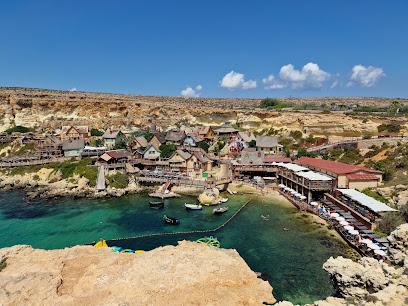
Malta National Aquarium
Explore the vibrant marine life at the Malta National Aquarium, a premier tourist attraction in St Paul's Bay offering captivating exhibits and immersive experiences.

Golden Bay
Discover the beauty of Golden Bay in Mellieħa, Malta, a perfect blend of sun, sand, and sea for an unforgettable beach experience.

Mosta Rotunda
Discover the awe-inspiring Mosta Rotunda, a neoclassical masterpiece in Malta known for its grand dome and rich historical significance.
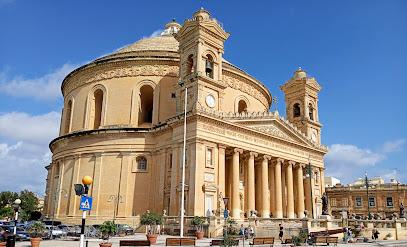
Blue Grotto
Experience the mesmerizing beauty of Malta's Blue Grotto, a stunning natural wonder with dazzling azure waters and captivating sea caves.
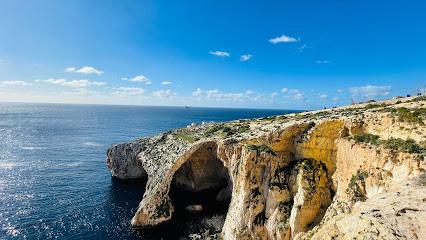
St Paul’s Catacombs
Uncover the mysteries of St. Paul’s Catacombs in Rabat, Malta - a remarkable archaeological journey through ancient burial sites.

National Zoo Rabat Morocco
Explore the National Zoo Rabat, where wildlife conservation meets unforgettable family fun in the heart of Morocco.

Il-Ġnien ta' Sant'Anton
Discover the tranquil beauty of Il-Ġnien ta' Sant'Anton, a historic park in Balzan with lush gardens, fountains, and serene pathways perfect for relaxation.

Dingli Cliffs
Experience the stunning beauty and rich history of Dingli Cliffs, Malta's breathtaking scenic spot overlooking the Mediterranean Sea.

Park Nazzjonali Ta' Qali
Explore the natural beauty of Park Nazzjonali Ta' Qali in Attard, Malta, a serene haven for nature lovers and outdoor enthusiasts.

Mellieha Bay
Discover the enchanting Mellieha Bay, Malta's premier beach destination, featuring stunning views, vibrant atmosphere, and countless activities for every traveler.
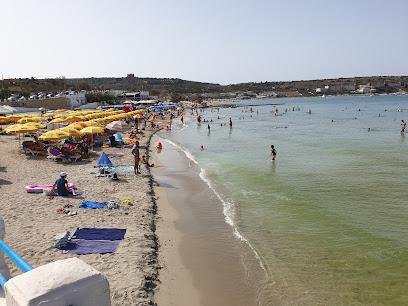
Ramla Bay Resort
Experience the ultimate getaway at Ramla Bay Resort, a stunning destination offering relaxation, adventure, and breathtaking views in Mellieħa, Malta.

Rabat Old Market
Explore the Rabat Old Market: A vibrant cultural hub filled with local crafts, delicious cuisine, and an unforgettable Moroccan experience.

The Red Tower
Discover the captivating history and breathtaking views at The Red Tower, a symbol of Malta's rich heritage and architectural splendor.

Essential places to dine
Dar Naji
Experience authentic Moroccan cuisine at Dar Naji in Rabat's Quartier de L'Ocean – where tradition meets flavor.
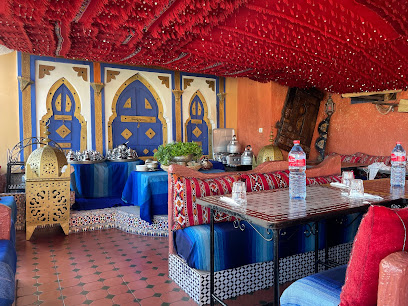
Le Dhow
Experience exquisite dining aboard Le Dhow in Rabat—where culinary delights meet stunning riverside views.

Zayyane
Experience authentic Moroccan cuisine at Zayyane in Rabat – where tradition meets taste in a welcoming atmosphere.

Casa Jose Tapas
Experience authentic Spanish tapas at Casa Jose Tapas in Rabat - where every dish tells a story of flavor and tradition.
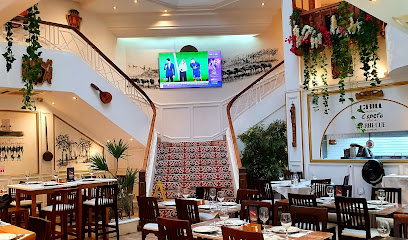
Pietripalace restaurant
Experience authentic Moroccan cuisine at Pietripalace Restaurant in Rabat - where every dish tells a story.

Villa Mandarine
Discover luxury and tradition at Villa Mandarine, where Moroccan hospitality meets exquisite dining in beautiful surroundings.

Chez Ouazzani _ عند الوزاني
Experience authentic Moroccan flavors at Chez Ouazzani - where barbecue meets tradition in the heart of Rabat.

Dar El Medina
Experience authentic Moroccan flavors at Dar El Medina in Rabat - where culinary tradition meets modern hospitality.

Dar Rbatia
Experience authentic Moroccan cuisine at Dar Rbatia – where tradition meets fine dining in Rabat's historic Medina.

Il Giardino
Experience the essence of Italy at Il Giardino in Rabat - where every meal is a celebration of authentic flavors and warm hospitality.

La Table de l'Amiral
Experience fresh seafood and traditional Moroccan dishes at La Table de l'Amiral with stunning ocean views in Rabat.

Ty Potes
Discover exquisite European and French cuisine at Ty Potes, a must-visit culinary haven in the heart of Rabat.

Le Georges
Experience exquisite modern French cuisine at Le Georges in Rabat – where tradition meets innovation and every meal is a celebration.

Le Limonadier
Experience authentic French cuisine at Le Limonadier in Rabat – where culinary excellence meets elegant ambiance.

Borjeddar
Experience authentic Moroccan seafood at Borjeddar in Rabat—where every dish tells a story of tradition and freshness.

Markets, malls and hidden boutiques
Mega Mall Rabat
Discover the ultimate shopping and entertainment experience at Mega Mall Rabat, featuring diverse stores, dining, and fun activities for all ages.

Mall Ait Baha
Experience the pulse of Rabat at Mall Ait Baha, a vibrant shopping destination offering diverse shops and delightful dining options.

Label'Gallery Rabat
Experience the vibrant shopping and cultural scene at Label'Gallery Rabat, a must-visit mall blending tradition and modernity in the heart of Morocco's capital.

Ô destock
Explore unbeatable deals at Ô Destock, Rabat's top outlet store for fashion and home essentials, perfect for savvy travelers seeking value.

vapestore Vente De Cigarette électronique Au Maroc
Explore the best vaping products in Rabat at the Vape Store Vente De Cigarette Électronique Au Maroc, your go-to destination for all things vape.

Jad Fashion Shop
Explore the latest Moroccan fashion trends at Jad Fashion Shop, a vibrant clothing store in the heart of Rabat, offering unique styles for every taste.

Sam Jones
Explore Sam Jones in Rabat for an exquisite selection of women's fashion, accessories, and footwear that define elegance and style.

Le Carrousel Mall
Experience shopping, dining, and entertainment at Le Carrousel Mall, the vibrant heart of retail in Rabat, Morocco.
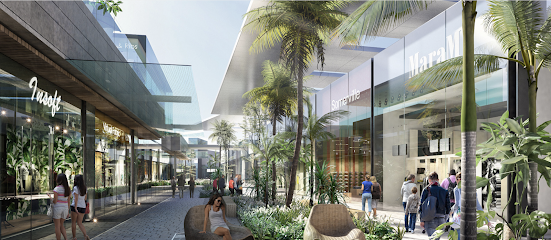
Godfather Vape Shop : Cigarette électronique Rabat
Explore Rabat's premier vaporizer store, offering a diverse selection of e-liquids and accessories tailored for every vaping enthusiast.

Nike Flagship Store Rabat
Shop the latest Nike apparel and footwear at Rabat's premier flagship store, where style meets performance in a vibrant retail environment.

MyCig Stand Arribat Center Rabat
Explore MyCig Stand in Rabat - Your ultimate destination for top-quality vaporizers and e-liquids in Morocco's capital.

الرباط سنتر
Explore the lively Rabat Center, a premier shopping destination in Morocco, where diverse shops and delightful dining await every visitor.

Boutique Japon
Discover the charm of Boutique Japon in Rabat, where Japanese culture meets Moroccan tradition in a delightful shopping experience.
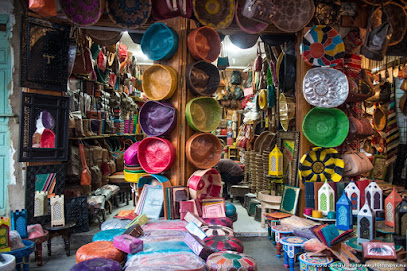
Oldsoul Vinatge Store
Explore Oldsoul Vintage Store in Rabat for unique clothing pieces that embody the spirit of fashion history and Moroccan culture.
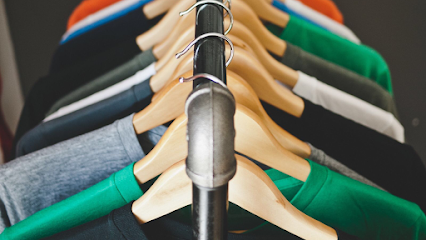
LE CORNER CONCEPT STORE
Immerse yourself in Moroccan elegance at Le Corner Concept Store, where fashion meets local artistry in the heart of Rabat.

Essential bars & hidden hideouts
Le Dhow
Experience the magic of Moroccan cuisine and vibrant nightlife at Le Dhow, a stunning restaurant and lounge on the Bouregreg River.

Upstairs
Discover the lively charm of Upstairs Pub in Rabat, where great drinks and a vibrant atmosphere await your visit.
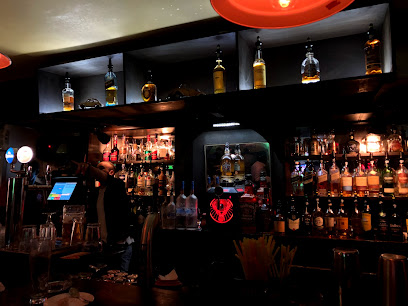
Le Georges
Experience exquisite modern French cuisine and an extensive wine selection at Le Georges, a culinary gem in the heart of Rabat.
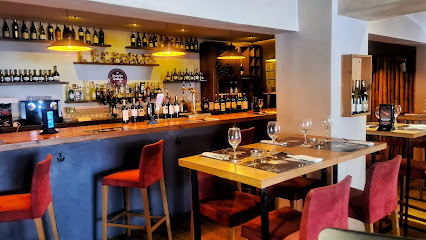
Boquería Fina
Explore the vibrant flavors of Mediterranean and Spanish cuisine at Boquería Fina, Rabat's premier bar and restaurant for tapas and cocktails.

SO LOUNGE
Discover the vibrant culinary scene at SO LOUNGE in Rabat, where modern elegance meets Moroccan charm for an unforgettable dining experience.

Le Chill
Discover the vibrant nightlife of Rabat at Le Chill, a lively pub offering great drinks and a welcoming atmosphere for all.

Vertigo
Discover the vibrant and stylish Vertigo Lounge in Rabat, where you can relax with drinks and light bites in a modern atmosphere.

Montecristo Rabat
Experience the vibrant nightlife at Montecristo Rabat, a stylish lounge offering refreshing drinks and a chic atmosphere in the heart of Morocco's capital.

Rockers
Experience the vibrant nightlife of Rabat at Rockers Pub, where great drinks and lively entertainment await every visitor.

Ambre Bar
Experience the elegance of Ambre Bar in Rabat, a serene lounge offering exquisite cocktails and a delightful culinary journey in a chic setting.

Yucatan
Experience the vibrant nightlife at Yucatan in Rabat, where delicious drinks and a lively atmosphere await you.

Baz'Art
Discover the vibrant nightlife and unique cocktail creations at Baz'Art, a cultural gem in the heart of Rabat, Morocco.

Trianon
Discover Trianon, a vibrant bar in Rabat offering a unique blend of Moroccan ambiance, diverse drinks, and lively entertainment.

Le Jour Et Nuit
Experience the vibrant flavors of Moroccan cuisine at Le Jour Et Nuit, Rabat's top grill restaurant offering delicious dishes and a warm atmosphere.

Jose Bar and Resturant
Discover the vibrant spirit of Rabat at Jose Bar and Restaurant, where local cuisine meets a lively atmosphere for an unforgettable dining experience.

Local Phrases
-
- Helloسلام
[salaam] - Goodbyeوداعا
[wadaa'an] - Yesنعم
[naam] - Noلا
[laa] - Please/You're welcomeمن فضلك
[min fadlik] - Thank youشكرا
[shukran] - Excuse me/Sorryعذرا
[aadhara] - How are you?كيف حالك؟
[kayfa halak?] - Fine. And you?بخير. وأنت؟
[bikhayr. wa'ant?] - Do you speak English?هل تتكلم الإنجليزية؟
[hal tatakallam al'injlizia?] - I don't understandلا أفهم
[laa afham]
- Helloسلام
-
- I'd like to see the menu, pleaseأريد أن أرى القائمة، من فضلك
[uridu an ara alqa'imah, min fadlik] - I don't eat meatأنا لا آكل اللحم
[ana la aakul allahm] - Cheers!في صحتك!
[fi sahtak!] - I would like to pay, pleaseأود أن أدفع، من فضلك
[awadu an adfa', min fadlik]
- I'd like to see the menu, pleaseأريد أن أرى القائمة، من فضلك
-
- Help!النجدة!
[alnajdah!] - Go away!ارحل!
[irhal!] - Call the Police!اتصل بالشرطة!
[i'tasal bialshurutah!] - Call a doctor!اتصل بالطبيب!
[i'tasal bialtabib!] - I'm lostأنا ضائع
[ana daa'ea] - I'm illأنا مريض
[ana mareed]
- Help!النجدة!
-
- I'd like to buy...أريد أن أشتري...
[uridu an ashtari] - I'm just lookingأنا فقط أتطلع
[ana faqat atatala] - How much is it?كم سعره؟
[kam si'ruh?] - That's too expensiveهذا غالي جدا
[hatha ghali jiddan] - Can you lower the price?هل يمكنك تخفيض السعر؟
[hal yumkinuka takhfid alsir?]
- I'd like to buy...أريد أن أشتري...
-
- What time is it?كم الساعة؟
[kam alsaa'a?] - It's one o'clockالساعة الواحدة
[alsaa'ah alwahidah] - Half past (10)العاشر و النصف
[al'ashir wa annisf] - Morningالصباح
[assabah] - Afternoonالظهر
[adhuhur] - Eveningالمساء
[almasa'] - Yesterdayأمس
[ams] - Todayاليوم
[alyawm] - Tomorrowغدا
[ghadan] - 1واحد
[wahid] - 2اثنان
[ithnan] - 3ثلاثة
[thalatha] - 4أربعة
[arba'a] - 5خمسة
[khamsa] - 6ستة
[sitta] - 7سبعة
[sab'a] - 8ثمانية
[thamania] - 9تسعة
[tasia] - 10عشرة
[ashara]
- What time is it?كم الساعة؟
-
- Where's a/the...?أين ...؟
[ayn...?] - What's the address?ما هو العنوان؟
[ma huwa al'unnwan?] - Can you show me (on the map)?هل يمكنك أن تريني (على الخريطة)؟
[hal yumkinuka 'an tarini (ala alkharytah)?] - When's the next (bus)?متى القادمة (الحافلة)؟
[mata alqadima (alhafilah)?] - A ticket (to ....)تذكرة (إلى ...)
[tazkirah (ila ...)]
- Where's a/the...?أين ...؟
History of Rabat
-
Rabat was founded in the 12th century by the Almohad caliph Abd al-Mu'min. Initially established as a military outpost, the city served as a launching point for campaigns against Spain. The original name, Ribat al-Fath, translates to 'Camp of Victory,' highlighting its strategic importance.
-
During the Almohad period, Rabat saw significant development. The construction of the Kasbah of the Udayas, a fortress at the mouth of the Bou Regreg river, is one of the most notable achievements from this era. The Almohads also began constructing the Hassan Tower, which was intended to be the largest minaret in the world but was never completed.
-
After the fall of the Almohad dynasty, Rabat entered a period of decline. It wasn’t until the 17th century, under the Alaouite dynasty, that the city began to revive. A significant influx of Andalusian Moors, expelled from Spain, brought new life and skills, particularly in the realms of craftsmanship and trade.
-
In 1912, Morocco became a French protectorate, and Rabat was chosen as the administrative capital. The French influence is evident in the city's architecture and urban planning, with wide boulevards, modern infrastructure, and distinct European-style buildings juxtaposed against traditional Moroccan structures.
-
Upon gaining independence in 1956, Rabat was declared the capital of the Kingdom of Morocco. The city has since grown into a political and administrative hub, home to the Royal Palace, government ministries, and numerous international embassies. Modern Rabat is a blend of historical heritage and contemporary culture, showcasing Morocco's evolution over the centuries.
-
Rabat's cultural heritage is rich and diverse, with numerous UNESCO World Heritage sites. The Medina of Rabat, the Kasbah of the Udayas, and the Hassan Tower are just a few of the historical landmarks that illustrate the city’s storied past. Annual events like the Mawazine music festival further highlight the city’s vibrant cultural scene.
Rabat Essentials
-
Rabat is accessible via Rabat-Salé Airport (RBA), located approximately 8 kilometers from the city center. International flights from Europe and other parts of Africa frequently arrive here. Another option is to fly into Mohammed V International Airport in Casablanca, which is about 120 kilometers from Rabat, and then take a train, taxi, or bus to Rabat. Trains from Casablanca to Rabat run frequently and take about an hour.
-
Rabat has a comprehensive public transportation system, including buses and trams. The tramway system is modern and connects major parts of the city. Taxis are also widely available; 'Petit Taxis' are for short distances within the city, while 'Grand Taxis' travel to neighboring cities and towns. For those who prefer to drive, car rental services are available, but be mindful of local driving customs and traffic.
-
The official currency in Morocco is the Moroccan Dirham (MAD). Credit and debit cards are accepted in most hotels, restaurants, and shops, but it is advisable to carry cash for smaller establishments and markets. ATMs are widely available in Rabat for cash withdrawals. It is also recommended to have some smaller denominations for taxis and tips.
-
Rabat is generally considered safe for tourists. However, standard precautions should be taken, such as avoiding poorly lit areas at night and keeping an eye on personal belongings in crowded places. While Rabat does not have specific high-crime areas targeting tourists, petty crimes like pickpocketing can occur. Areas like Medina, while vibrant, should be navigated with caution, especially at night.
-
In case of emergency, dial 19 for police assistance, 15 for medical emergencies, and 05 37 77 77 77 for fire services. Major hospitals and clinics are available in Rabat, including the Avicenne Military Hospital and the Ibn Sina Hospital. It is advisable to have travel insurance that covers medical emergencies. Pharmacies are plentiful and can provide over-the-counter medications.
-
Fashion: Do dress modestly, particularly when visiting religious sites. Avoid revealing clothing. Religion: Do respect Islamic customs and traditions. During Ramadan, avoid eating, drinking, or smoking in public during daylight hours. Public Transport: Do be courteous and give up your seat to elderly passengers. Don't eat or drink on public transport. Greetings: Do greet people with a handshake or a slight bow of the head. A friendly 'Salam Alaikum' (Peace be upon you) is a customary greeting. Eating & Drinking: Do try local Moroccan dishes and accept food offerings graciously. Don't refuse hospitality, as it is considered impolite.
-
To experience Rabat like a local, visit the Oudayas Kasbah, a tranquil neighborhood with narrow streets and traditional Moroccan houses. Explore the local markets (souks) to buy fresh produce and handicrafts. Engage with locals; they are often friendly and willing to share stories about the city’s history and culture. Don't miss visiting the Chellah, an ancient Roman and medieval necropolis, and the Hassan Tower, an incomplete minaret and notable historic site.
Trending Landmark in Rabat
Nearby Cities to Rabat
-
Things To Do in Mdina
-
Things To Do in Mgarr
-
Things To Do in Mqabba
-
Things To Do in Bugibba
-
Things To Do in Qawra
-
Things To Do in Marsa
-
Things To Do in Mellieha
-
Things To Do in Gzira
-
Things To Do in Zurrieq
-
Things To Do in St. Julian's
-
Things To Do in Paola
-
Things To Do in Sliema
-
Things To Do in Tarxien
-
Things To Do in Valletta
-
Things To Do in Birgu

















